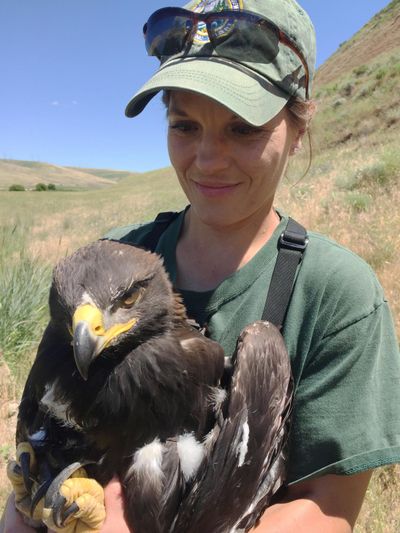Women in wildlife: The field biologist

CARRIE LOWE gets to do a lot of the exciting field stuff – handling critters from badgers and eagles to bighorn sheep and moose – as a Washington Department of Fish and Wildlife assistant district biologist in Spokane.
“I’ve even done surveys on beetles and monarch butterflies,” she said.
She’s also been bluff-charged by sow black bears at den sites as she tagged their cubs.
“The first time, I screamed,” she said.
“Dealing with wildlife is interesting, but what’s sometimes more challenging and rewarding are the human-wildlife interaction situations – like when we move a moose – where we can educate the public. Being a wildlife biologist, it’s easy to forget how little most people know about wildlife.”
Handling a golden eagle for the first time ranks in her top tier of wildlife experiences.
“I knew they were big animals, but it doesn’t sink in until you get hands on one.”
Years ago, she was among the few females at international conferences on bear work.
“I always felt I had something to prove, although I was never treated that way by the field crews or anybody I worked with,” she said. “It was more myself saying I have to prove this.”
She hasn’t hunted deer or elk, but she’s taken aim at spring gobblers.
“Just because I don’t sit in deer stand doesn’t mean I don’t know about deer. I talk to hunters all the time. I understand deer. I can relate to the hunter’s experience. That’s the important thing. I don’t think somebody who’s anti-hunting should be working in a state wildlife agency. Hunters are our customers. Doing what’s best for wildlife AND people is what we’re here to do.”